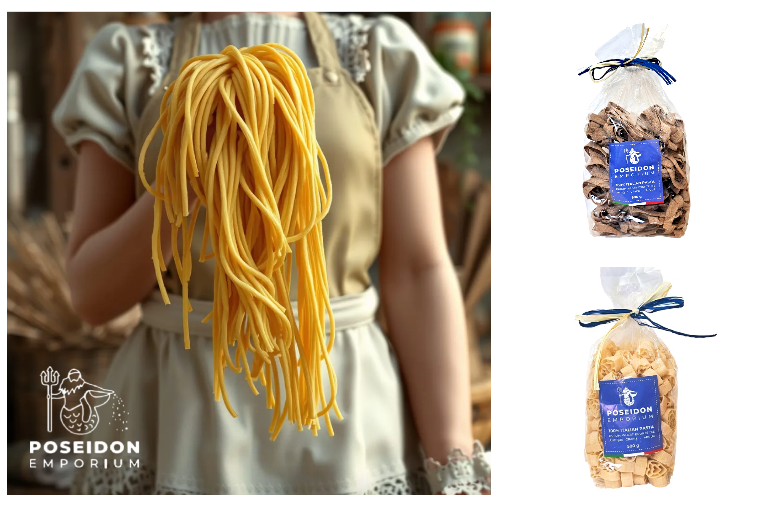Why Traditional Pasta-Making Techniques Still Matter
- IFM GOURMET RETAIL
- Sep 30
- 4 min read
Pasta is a beloved staple in many kitchens worldwide. While modern technology has made pasta production faster and more convenient, traditional pasta-making techniques continue to hold a special place in culinary arts. These time-honoured methods not only preserve the authentic taste and texture of pasta but also connect us to cultural heritage and craftsmanship. In this article, we will examine why traditional pasta-making techniques remain relevant today and how they contribute to a superior pasta experience.

The Importance of Traditional Pasta Techniques
Traditional pasta-making is more than just mixing flour and water. It involves a deep understanding of ingredients, dough consistency, and shaping methods that have been refined over centuries. These techniques ensure that pasta has the right texture, flavour, and cooking properties.
One key aspect is the use of high-quality ingredients such as durum wheat semolina, which provides the ideal protein content and gluten strength. Traditional methods often involve hand-kneading the dough, which allows for better control over its elasticity and moisture. This results in pasta that cooks evenly and holds sauces beautifully.
Moreover, traditional pasta shapes are crafted to complement specific sauces and dishes. For example, long strands like spaghetti are perfect for light tomato sauces, while ridged shapes like rigatoni hold chunky meat sauces well. Preserving these shapes through traditional techniques maintains the harmony between pasta and sauce.

How Traditional Pasta Shapes Enhance the Dining Experience
The shapes of pasta are not random; they are designed to enhance the overall eating experience. Traditional pasta shapes are created with specific textures and surface areas that interact with sauces in unique ways.
For instance, tubular shapes like penne and ziti have hollow centres that trap sauce inside, delivering flavour with every bite. Flat shapes like pappardelle provide a broad surface for rich, creamy sauces to cling to. Small shapes like orecchiette are perfect for chunky vegetable or meat sauces, as their concave form holds bits of ingredients.
Using traditional shaping techniques ensures that pasta maintains its intended form and texture after cooking. This is often achieved by hand or with specialised tools that create ridges, grooves, or folds. These details are essential for creating a balanced dish where pasta and sauce complement each other perfectly.

What is so special about bronze-cut pasta?
One of the most distinctive traditional pasta-making methods is the use of bronze dies to shape the dough. Unlike modern Teflon-coated dies, bronze-cut pasta has a rougher surface texture. This texture is crucial because it allows sauces to cling better to the pasta, enhancing flavour and mouthfeel.
Bronze-cut pasta is often associated with artisanal quality and authenticity. The rough surface also gives the pasta a slightly porous quality, which improves the absorption of sauces. This technique is still used by many premium pasta producers who value tradition and quality over mass production.
If you want to experience the unique texture and taste of bronze-cut pasta, you can explore options like bronze-cut pasta, which offers a range of traditionally made pasta products.

Preserving Cultural Heritage Through Pasta-Making
Traditional pasta-making is deeply rooted in cultural heritage. Each region in Italy, for example, has its own unique pasta shapes and recipes that reflect local ingredients and history. By continuing to use traditional techniques, we preserve these culinary traditions and pass them on to future generations.
Learning and practising traditional pasta-making also fosters a connection to the past. It encourages patience, skill, and appreciation for craftsmanship. In a world dominated by fast food and convenience, traditional pasta-making offers a slower, more mindful approach to cooking.
For home cooks and chefs alike, embracing traditional methods can be a rewarding experience. It allows for creativity within a framework of time-tested techniques and results in dishes that are both authentic and delicious.

Practical Tips for Making Traditional Pasta at Home
If you want to try traditional pasta-making yourself, here are some practical tips to get started:
Use the right flour - Durum wheat semolina is ideal for pasta dough due to its high protein content.
Measure ingredients accurately - Pasta dough requires precise ratios of flour to water or eggs.
Knead thoroughly - Knead the dough until it is smooth and elastic, usually about 10 minutes by hand.
Rest the dough - Let the dough rest for at least 30 minutes to relax the gluten.
Shape carefully - Use a rolling pin or pasta machine to roll out the dough evenly. Cut or shape according to traditional forms.
Cook properly - Fresh pasta cooks quickly, usually 2-4 minutes in boiling salted water. Test frequently to avoid overcooking.
By following these steps, you can create pasta that rivals restaurant quality and honours traditional craftsmanship.
Traditional pasta-making techniques are more than just a nod to the past. They are essential for creating pasta with superior texture, flavour, and cultural significance. Whether you are a passionate home cook or a professional chef, embracing these methods enriches your culinary skills and deepens your appreciation for this timeless food. Next time you enjoy a plate of pasta, remember the artistry and tradition behind every bite.


Comments